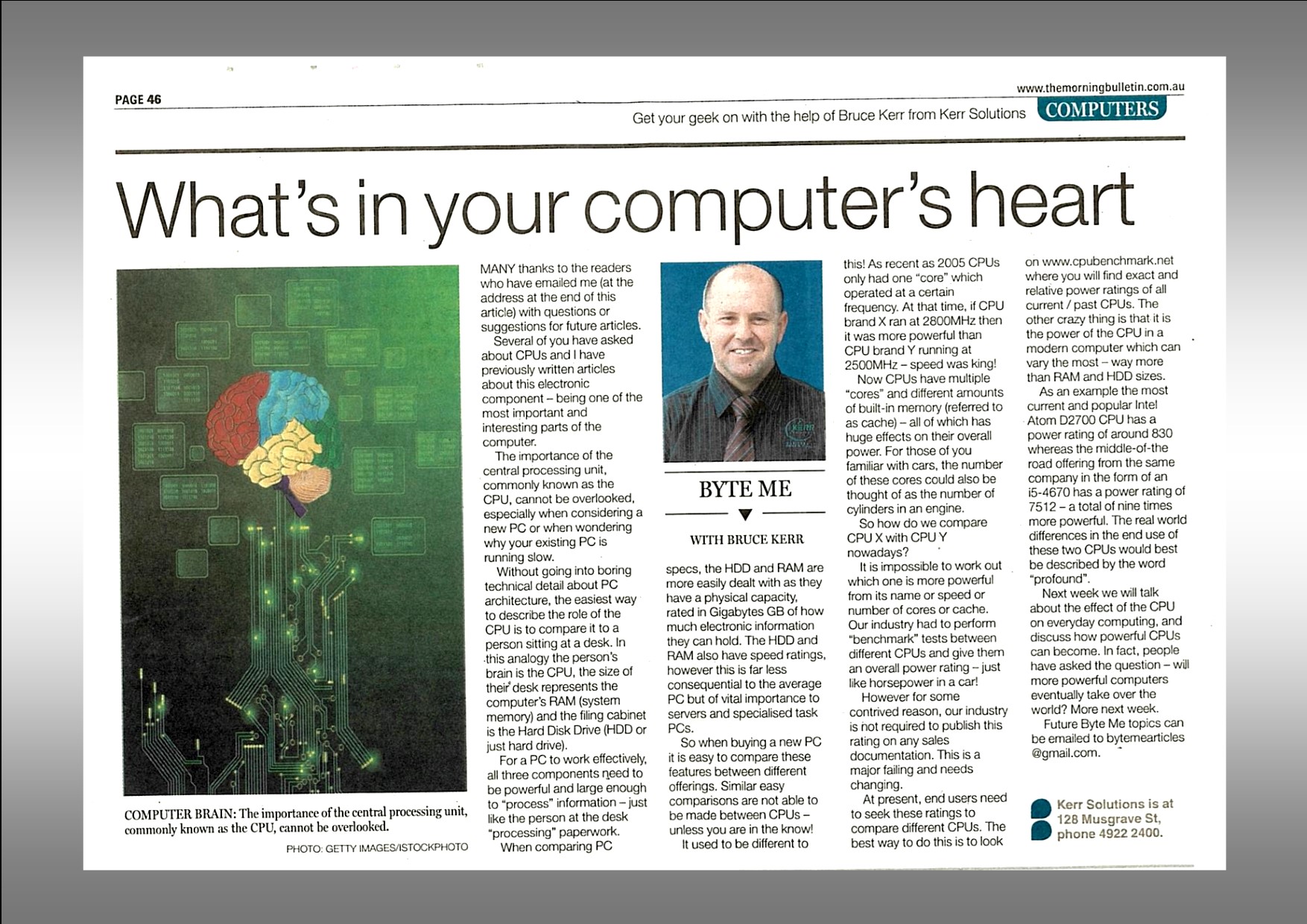What’s in Your Computers Heart
Many thanks to the readers who have emailed me (at the address at the end of this article) with questions or suggestions for future articles. Several of you have asked about CPU’s and I have previously written a couple of articles about this electronic component – being one of the most important & interesting parts of the computer. However, the importance of the central processing unit, commonly known as the CPU cannot be overlooked, especially when considering a new PC or when wondering why your existing PC is running slow.
Without going into boring technical detail about PC architecture the easiest way to describe the role of the CPU is to compare it to a person sitting at a desk. In this analogy the persons’ brain is the CPU, the size of their desk represents the computers RAM (system memory) and the filing cabinet is the Hard Disk Drive (HDD or just hard drive). For a PC to work effectively, all 3 of these major components need to be powerful / large enough to ‘process’ information – just like the person at the desk ‘processing’ paperwork.
When comparing PC specs the HDD and RAM are more easily dealt with as they have a physical capacity, rated in Gigabytes GB of how much electronic information they can hold. The HDD and RAM also both have a speed ratings, however this is far less consequential to the average PC but of vital importance to servers and specialised task PC’s. So when buying a new PC it is easy to compare both of these features between different offerings. Similar easy comparisons are not able to be made between CPU’s – unless you are in the know!
It used to be different to this! As recent as 2005 CPU’s only had one ‘core’ which operated at a certain frequency. At that time if CPU brand ‘X’ ran at 2800MHz then it was more powerful than CPU brand ‘Y’ running at 2500MHz – speed was king! Now CPU’s have multiple ‘cores’ and different amounts of built in memory (referred to as cache) – all of which has huge effects on their overall power. For those of you familiar with cars, the number of these cores could also be thought of as the number of cylinders in an engine.
So how do we compare CPU ‘X’ with CPU ‘Y’ nowadays? It is impossible to work out which one is more powerful from its name or speed or number of cores or cache. Our industry had to perform ‘benchmark’ tests between all of these different CPU’s and then they get an overall power rating – just like horsepower in a car! However for some stupid and I believe contrived reason, our industry is not required to publish this rating on any sales documentation. This is a major failing & needs changing!
At present, end users themselves need to seek these ratings to be able to compare different CPU’s. The best way to do this is to look on www.cpubenchmark.net where you will find exact and relative power ratings of all current / past CPU’s. The other crazy thing is that it is the power of the CPU in a modern computer which can vary the most – way more than RAM and HDD sizes. As an example the most current & popular Intel Atom D2700 CPU has a power rating of around 830 whereas the middle-of-the road offering from the same company in the form of an i5-4670 has a power rating of 7,512 – a total of 9 times as powerful. The real world differences in the end use of these two CPU’s would best be described by the word, profound!
Next week we will talk a little more about the effect of the CPU on everyday computing as well as talking about how powerful CPU’s can become. In fact several people have written in asking the question – will more powerful computers eventually take over the world? These answers and more – next week!
Future Byte Me topics can be emailed to [email protected] and Bruce is contactable at Kerr Solutions, 205 Musgrave Street or on 49 222 400.
For more advice and assistance from Kerr Solutions, like and follow us on Facebook

